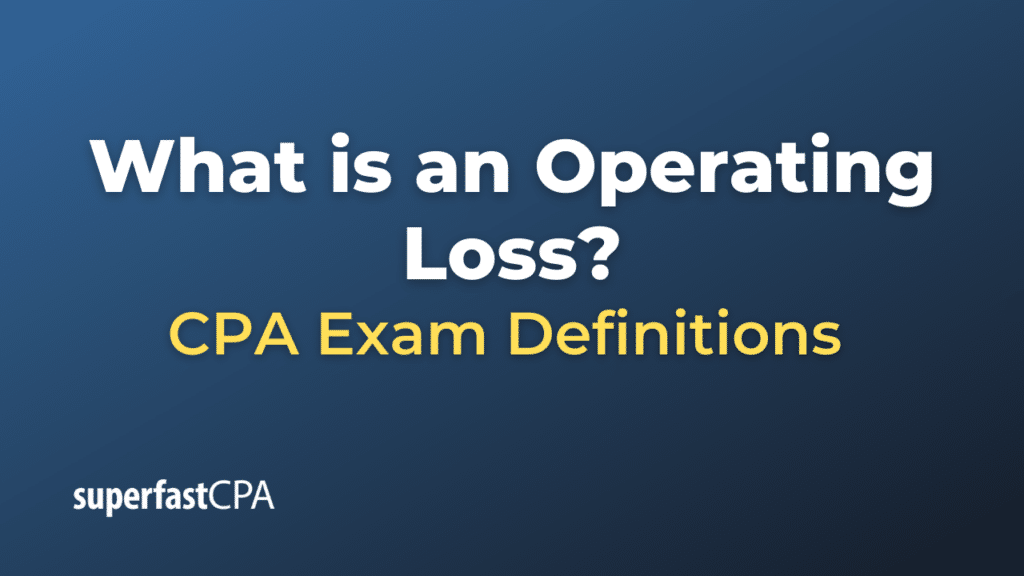Operating Loss
An operating loss occurs when a company’s operating expenses exceed its operating revenues during a given period. Essentially, it means that the costs of running the business (like salaries, rent, utilities, depreciation, and the cost of goods sold) are greater than the income generated from the core business operations.
Here’s how you can calculate operating loss:
Operating Loss = Operating Expenses – Gross Profit
Where:
- Gross Profit = Total Revenue – Cost of Goods Sold (COGS)
- Operating Expenses include items like rent, salaries, utilities, depreciation, and more.
The operating loss does not consider any income or expenses from non-operating activities, such as interest expenses or income, taxes, or gains or losses from investments or the sale of assets.
Experiencing an operating loss can be a sign of problems within a company, particularly if the losses continue over time. However, it’s not uncommon for businesses (especially startups and growth companies) to experience an operating loss in their early years as they invest heavily in their operations to grow and expand.
It’s important for businesses and their stakeholders to understand the source of the operating loss and whether it’s a temporary or a long-term issue. An occasional operating loss may not be a concern if the company is making strategic investments that will lead to higher revenues and profits in the future. However, consistent operating losses over time can indicate serious issues with a company’s business model or market.
Example of an Operating Loss
Let’s consider a hypothetical example of a tech startup, InnovateXYZ.
InnovateXYZ is in its early stages and investing heavily in research, development, and marketing to establish its product in the market. Here’s a simplified version of their income statement for the year:
- Total Revenue: $200,000
- Cost of Goods Sold (COGS): $50,000
- Operating Expenses: $300,000
First, let’s calculate the Gross Profit:
Gross Profit = Total Revenue – Cost of Goods Sold
Gross Profit = $200,000 – $50,000
Gross Profit = $150,000
Then we can calculate the Operating Income (or in this case, Operating Loss):
Operating Income (Loss) = Gross Profit – Operating Expenses
Operating Income (Loss) = $150,000 – $300,000
Operating Income (Loss) = -$150,000
In this case, InnovateXYZ has an operating loss of $150,000 for the year. This means that the costs of running the business have exceeded the income from the business operations.
Remember, for a startup like InnovateXYZ, an operating loss isn’t necessarily a sign of failure. It’s not uncommon for startups to operate at a loss initially as they invest in product development, market expansion, and acquiring new customers. The key for the company is to demonstrate that it can turn these investments into growing revenue and, eventually, profitability.
However, if InnovateXYZ continues to operate at a loss over a long period without showing signs of progress towards profitability, it may indicate deeper issues with the company’s business model, strategy, or market.













